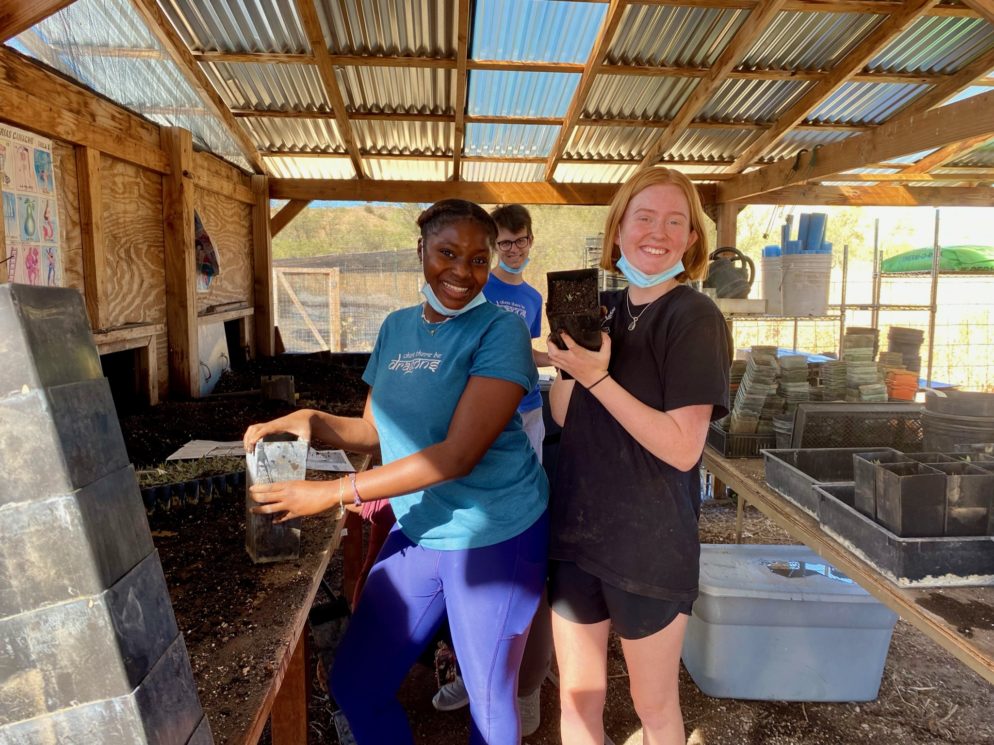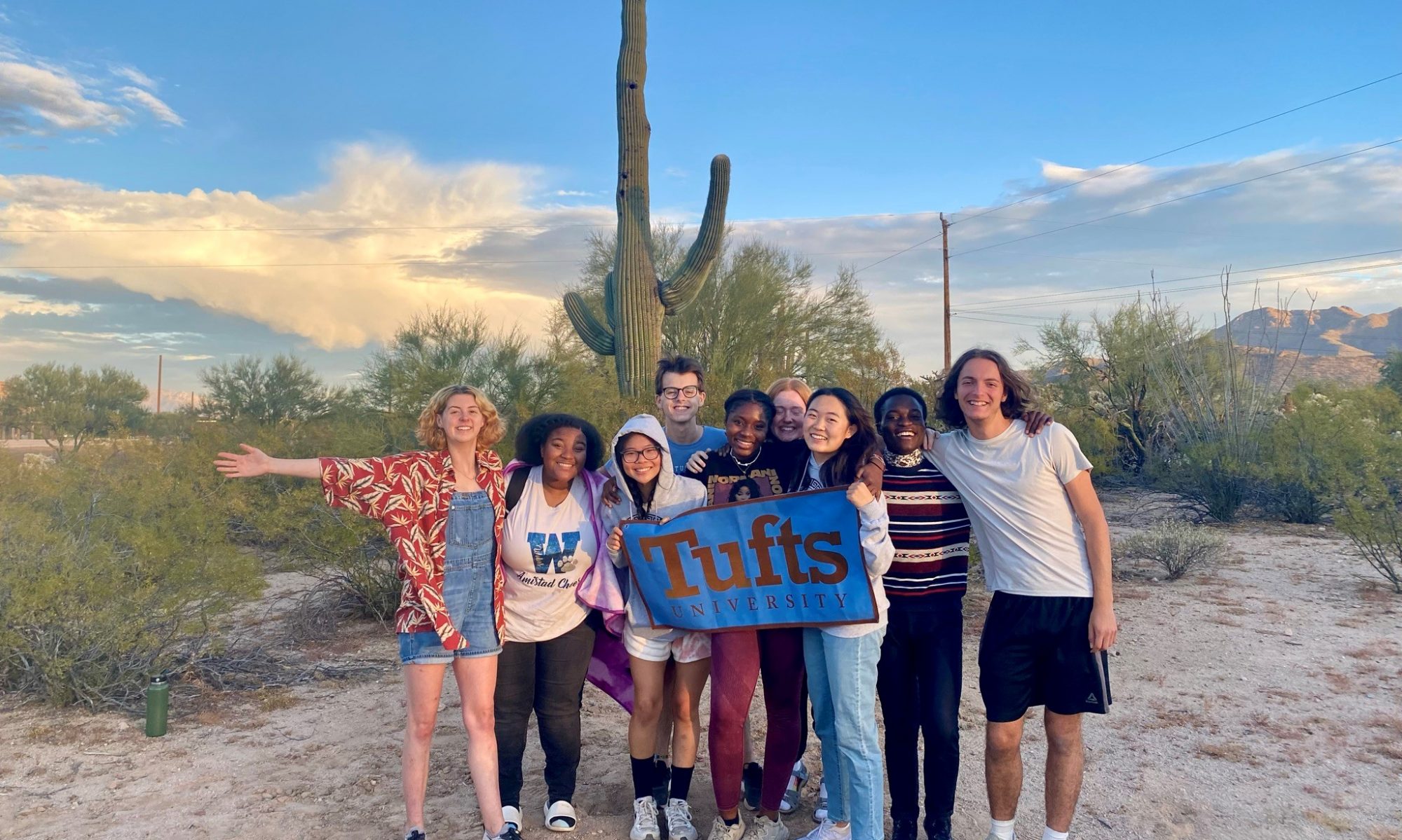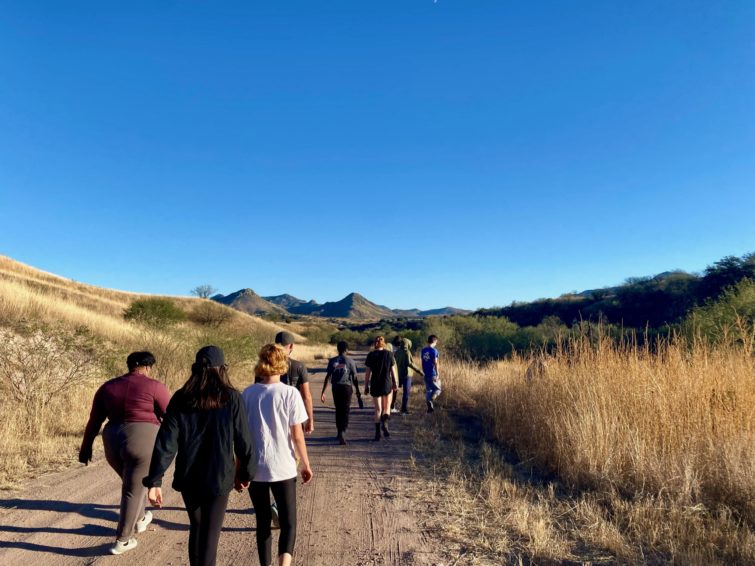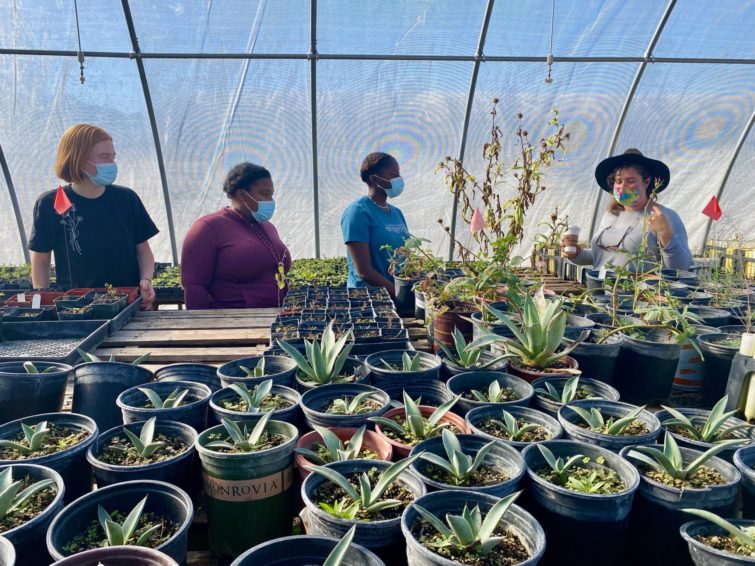by Biani, Civic Semester Participant

From Tuesday the 9th till Friday the 12th we did an organization visit with Borderlands Restoration Network (BRN) in Patagonia, Arizona. BRN is a non-profit made up of smaller organizations, like the Deep Dirt Institute and the Native Plant Nursery, that we had the privilege of working with and learning from this week. During our stay in Patagonia, we camped at the Deep Dirt Institute campus. Deep Dirt Institute was founded by Kate Tirion, an all-round inspiring human being that is dedicated to understanding how best we can utilize native materials and believes in the enthusiastic energy of youths, like ourselves, to make these ideas come to life. I will be writing about the day that we spent at the Native Plant Nursery and Borderland Wildlife Reserve (BWR).
It was a sleepless night for the group followed by a chilly morning that made the mood a little somber. But, our spirits were quickly lifted by the cheery aura of Francesca, the director of the Nursery. Francesca took us on a tour of the property, showing us all the greenhouses and pointing out her favorite plants. She shared with us some of her germination recipes, such as chilling the seeds, pouring boiling water on them and squeezing lime on their outsides. We also got to learn a lot about agaves like how they take decades to grow, are mostly pollinated by bats and used to make tequila. Her love for the native plants was infectious and got us excited for the work that we would be doing with agaves later in the day. We got to transfer agaves into larger pots so they had more space to grow, while dancing to Ariana Grande in the background. By the end of the visit, Francesca got us appreciating how sexy plants are and the importance of staying motivated when trying to garden.
After taking a break for class, we got to meet with Cholla who is the Lead Technician and Safety Coordinator for the Borderland Wildlife Reserve. She shared with us the history of the reserve and what it means for land to be a wildlife sanctuary: no hunting takes place as the land is protected and can only be used for light recreational use. We got to learn that the topography of the land (specifically the Sky Islands) is what makes it so special and a biodiversity hotspot. Over 7000 species of plants and animals can be found in the reserve (which I think is pretty cool)! Later Cholla taught us what equipment is necessary to identify the animals that can be found on the reserve, which are wildlife trail cameras and sound scaling equipment. Cholla talked more about the wildlife cameras and showed us pictures of bobcats, bears, barn owls, and silver foxes that had been caught on camera. We ended our meeting by driving down to see one of the camera traps that had been set up by Cholla in the reserve.
The visits that we did on our second day were truly eye-opening and I learnt so much from Francesca and Cholla. I am just so grateful that they were able to take the time to speak to us so that we could learn from them and expand our understanding of wildlife in the borderlands. Will be updating you soon on the other fun visits that we have!
Originally posted here.



